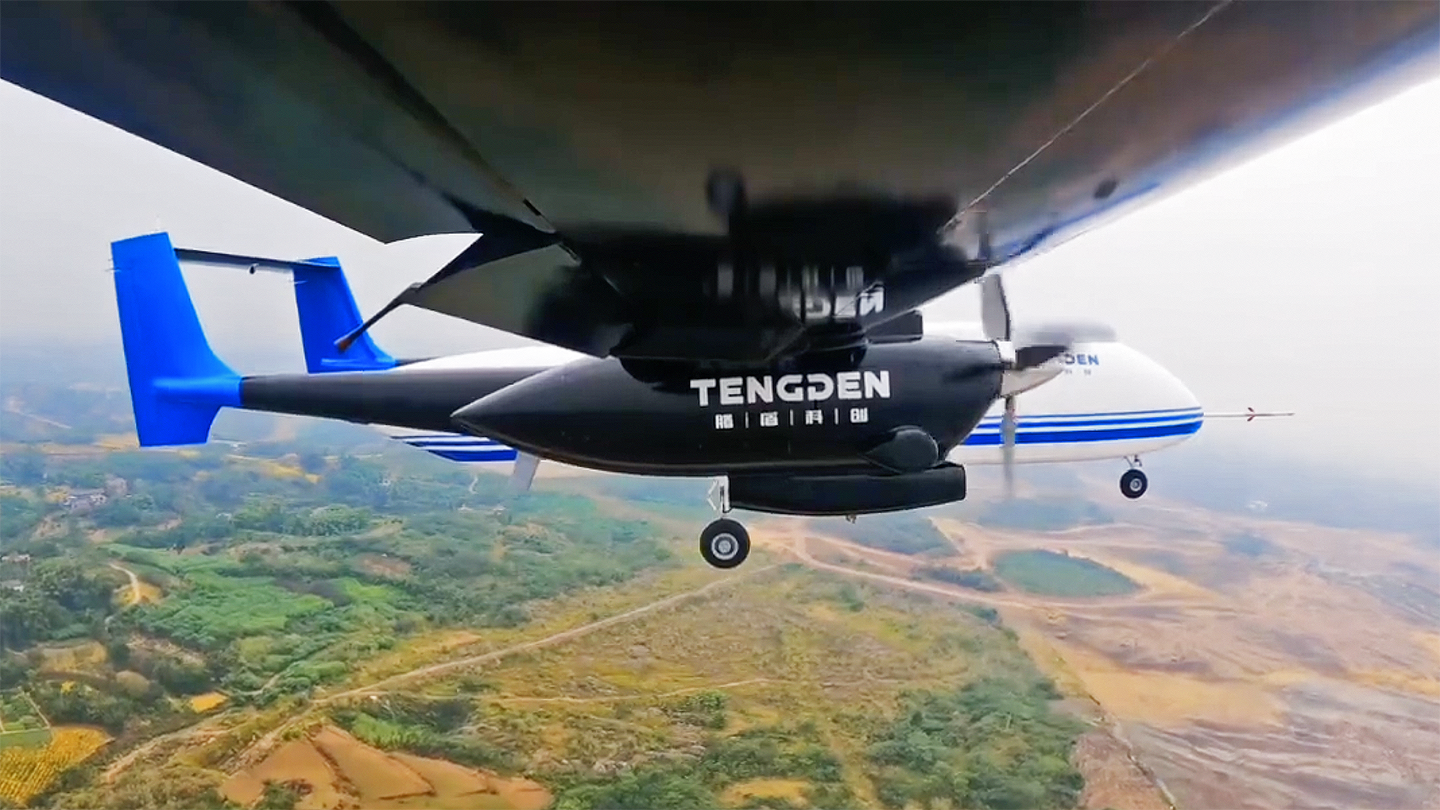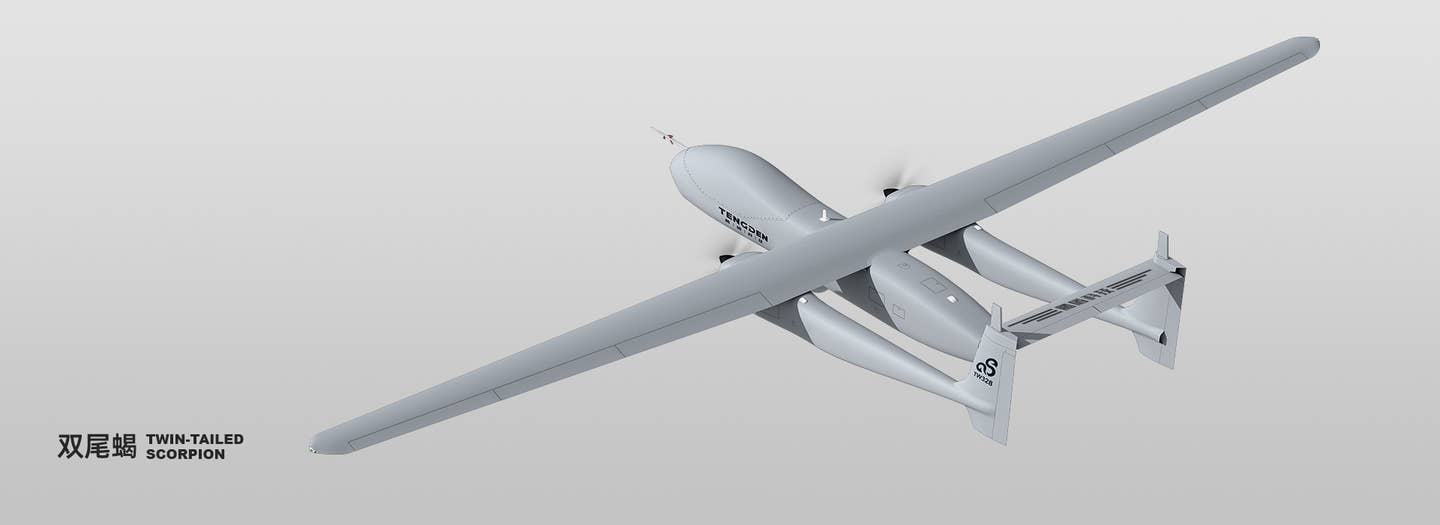EMMA HELFRICH
Acargo drone dubbed TB0D Scorpion D and built by China’s Tengden Technology company completed its maiden flight in Sichuan on October 25. The company says Scorpion D will be able to carry payloads weighing up to 1.5 tons.
Scorpion D is equipped with four propellers driven by gas engines, two under each of its wings, which are fitted high atop the drone’s fuselage. The company has also shared the Scorpion D’s supposed technical specifications, which detail that the cargo drone clocks in at 34 feet (10.5 m) in length, stands at 10 feet (3.1 m) tall, and has a 65-foot (20 m) wingspan.
 A screencap from the Tengden video of the Scorpion D's maiden flight. Credit: Tengden via Twitter
A screencap from the Tengden video of the Scorpion D's maiden flight. Credit: Tengden via TwitterAlong with its substantial payload capacity, reportedly up to 1.5 tons, Scorpion D’s maximum takeoff weight is 4.35 tons. Scorpion D’s cargo hold is said to measure out to about 31 square feet and about 5 cubic meters, which would leave ample room for a variety of equipment and supplies be it civilian or military depending on the use case.
It would also appear that the cargo drone will serve as another variant in a growing series of aircraft being produced by the company. This ‘family’ of Tengden drones began with a separate system designated as the TB-001 Scorpion medium-altitude, long-endurance (MALE) drone, which is also Tengden’s flagship aircraft. Considering that information about how exactly Scorpion D will be controlled and operated as well as the drone’s range doesn't appear readily available, its progenitor's specifications could be beneficial in better understanding how Scorpion D will perform once operational.
 A rendering of the flagship TB-001 Scorpion. Credit: Tengden
A rendering of the flagship TB-001 Scorpion. Credit: TengdenFor instance, Tengden's website claims that TB-001, with its two engines as opposed to Scorpion D's four, has a range of about 3,728 miles (6,000 km) and a flight endurance of about 35 hours. While the site itself doesn't detail how the drone is controlled, TB-001 reportedly features man-in-the-loop and semi-autonomous capabilities with an effective communication range of 173 miles (280 km) from the ground command post within line of sight. TB-001 can also utilize satellite communication data links, which would ostensibly extend the two-way communication distance potentially indefinitely.
The TB-001 Scorpion features a twin-boom tail similar to the Scorpion D but is instead powered by only two single propellor engines on either side of its fuselage under its straight, high-mounted main wing. The company has also produced a three-engine variant of the inaugural Scorpion meant to improve “wide-area deployment, short take-off and landing, high-altitude performance, [and] high-power power supply capability,” according to the company.
TB-001 was designed with the option to be armed or carry other external stores as opposed to carrying cargo. The aircraft features four underwing hardpoints that are capable of holding various missiles and precision-guided bombs and is also equipped with a sensor turret underneath its central fuselage, whereas neither addition can be immediately seen in the recently surfaced photos of the Scorpion D. TB-001 does, however, boast technical specifications similar to the Scorpion D, with a maximum takeoff weight of about 3 tons and similar size measurements.
According to Tengden’s website, the TB-001 “has successfully provided services for fields related to the national economy and people's livelihood such as emergency rescue, regional logistics, materials delivery, and meteorology services, and blazed a trail of UAV commercialization in terms of UAV remote command, materials aerial delivery, route test flight, forest fire prevention and rescue, communication relay and typhoon observation.” While some of this may be true, the type is especially used for military applications.
No comments:
Post a Comment